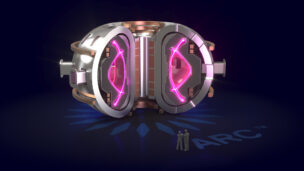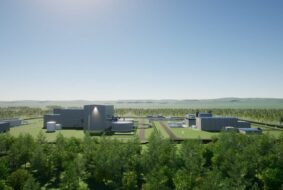Another batch of funding has hit the fusion sector, and this time around, it’s supporting a simplified version of the twistiest concept around.
Renaissance Fusion, a French stellarator developer, announced last week that it’s raised a €32M ($34.7M) funding round to advance development of its fusion machine concept and work toward a demo plant (h/t TechCrunch).
- The round was led by Crédit Mutuel Impact’s Révolution Environnementale et Solidaire fund with participation from Lowercarbon Capital.
- The funding brings Renaissance’s total capital secured to more than €60M, including a €15.5M seed raised in May 2022 and a €10M grant from BPI France in November 2023.
- This is the first closing of the company’s Series A, but fundraising is ongoing.
The approach: There are a handful of new technologies involved in Renaissance’s stellarator design, and that’s why, it seems, the founders are heading that direction. “You connect the dots. It’s the essence of inspiration,” Francesco Volpe, Renaissance Fusion CTO, told TechCrunch.
Stellarators are notoriously wonky-looking structures, twisted in an undulating shape to allow the plasma within the magnetic confinement to flow more naturally. Renaissance Fusion’s approach to stellarator confinement attempts to simplify that shape by advancing several theoretical technologies in tandem. These include:
- Using segmented tubes to form the shape of the machine
- Laser-etching superconducting lines along the tube to influence the plasma within
- Manufacturing these magnets as flexible sheets that can be bent into the proper shape
The design also includes some familiar approaches, like tritium breeding to generate its own fuel.
In the meantime: Like many other fusion firms, Renaissance is looking at what it’s got and figuring out what’s possible to commercialize in the potentially decade-long interim between now and commercialization of fusion energy.
Its answer: the high-temperature superconducting magnet technology it’s developing for its own machine. The company said that this will quickly generate revenue.
What now? Work is underway on a demonstrator that would prove out some of the pieces needed to build a fusion machine.
Lead Reporter of Ignition





